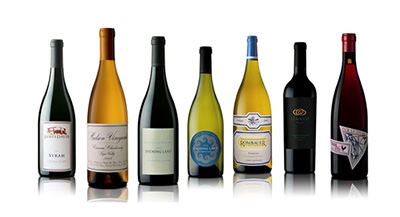The beverage industry looks different in 2025. Machines track ingredients in real time. Trucks reroute deliveries around traffic jams. Store shelves adjust prices based on weather forecasts. This isn’t science fiction, it’s today’s reality.
Emerging technologies like AI and IoT reshape every step, from factory floors to your local grocery aisle. Companies that adapt now secure their spot in a competitive market. But how exactly do these tools create change? And what separates leaders from those playing catch-up?
Let’s explore the innovations redefining what’s possible. You’ll see why tech-savvy brands stay ahead, and how others risk falling behind.
AI-Driven Flavor Development: Crafting Drinks with Machine Learning
Imagine a machine that tastes thousands of flavor combinations in seconds. That’s what AI-powered tools now do for beverage companies. By analyzing social media trends, sales data, and even genetic taste profiles, algorithms predict which flavors will resonate with specific demographics.
PepsiCo, for example, used machine learning to develop its 2024 limited-edition “Citrus Eclipse” soda. The AI cross-referenced summer search trends (“tropical,” “low-sugar”) and historical sales to propose a mango-guava blend with stevia.
It’s like when you mix paints based on a friend’s favorite colors, except the AI does it faster, and with a 92% success rate in market tests, according to a 2024 Gartner report.
IoT Sensors in Distribution Networks: Cutting Waste, Boosting Speed
Every pallet, truck, and storage unit now talks. IoT sensors monitor temperature, humidity, and location in real time. A beer distributor in Germany reduced spoilage by 37% by installing humidity sensors in delivery trucks.
If a trailer’s seal breaks during transport, the system reroutes the shipment to the nearest warehouse, no human intervention needed.
These sensors also optimize delivery routes. A case study by fb101.com highlights a U.S. juice company that cut fuel costs by 21% using live traffic and weather data.
The result? Fresher products, fewer wasted resources, and trucks that act like GPS-guided ants finding the quickest path home.
Dynamic Pricing Algorithms: How Weather and Demand Shift Costs
Why does a bottled water brand charge more during a heatwave? Dynamic pricing algorithms adjust costs based on real-time factors like weather, inventory levels, and competitor prices.
A sports drink might drop its price by 15% if sensors detect a rainy weekend ahead, nudging buyers to stock up indoors.
It’s the same thing as airline tickets fluctuating with demand. Coca-Cola reportedly tested this in 2023, using AI to raise prices by 10% at stadiums during sold-out games. Critics call it surge pricing, but Forrester notes brands using these tools see a 14% average revenue boost.
Blockchain for Ingredient Transparency: Building Consumer Trust
Shoppers scan a QR code and see exactly where their coffee beans were grown or how much carbon was emitted to ship their kombucha. Blockchain creates an unbreakable digital ledger for every ingredient. Nestlé’s 2025 “Bean to Bottle” initiative uses this to trace oat milk sources across 12 countries.
This transparency isn’t just ethical, it’s profitable. A 2024 Nielsen study found 73% of millennials pay up to 20% more for brands with verified supply chains.
And for businesses wondering how to become EDI capable, integrating blockchain with existing electronic data interchange (EDI) systems simplifies compliance and auditing.
Predictive Maintenance in Production Lines: Avoiding Downtime Before It Happens
Machines now warn technicians about failing parts weeks in advance. Vibration sensors and thermal cameras on bottling lines detect anomalies, like a conveyor belt motor overheating. Heineken’s Mexico facility avoided a 12-hour shutdown by replacing a faulty valve.
It’s like when your car’s dashboard lights up before a breakdown. These systems analyze historical data to predict wear-and-tear, slashing unplanned downtime by up to 45% (McKinsey, 2024). For smaller breweries, modular IoT kits from fb101.com offer plug-and-play solutions without custom coding.
Final Note
The beverage industry’s tech transformation isn’t about replacing humans, it’s about amplifying their impact. From AI-designed flavors to self-healing supply chains, the tools exist to cut costs, boost trust, and stay agile. The question isn’t whether to adopt them, but how fast.







